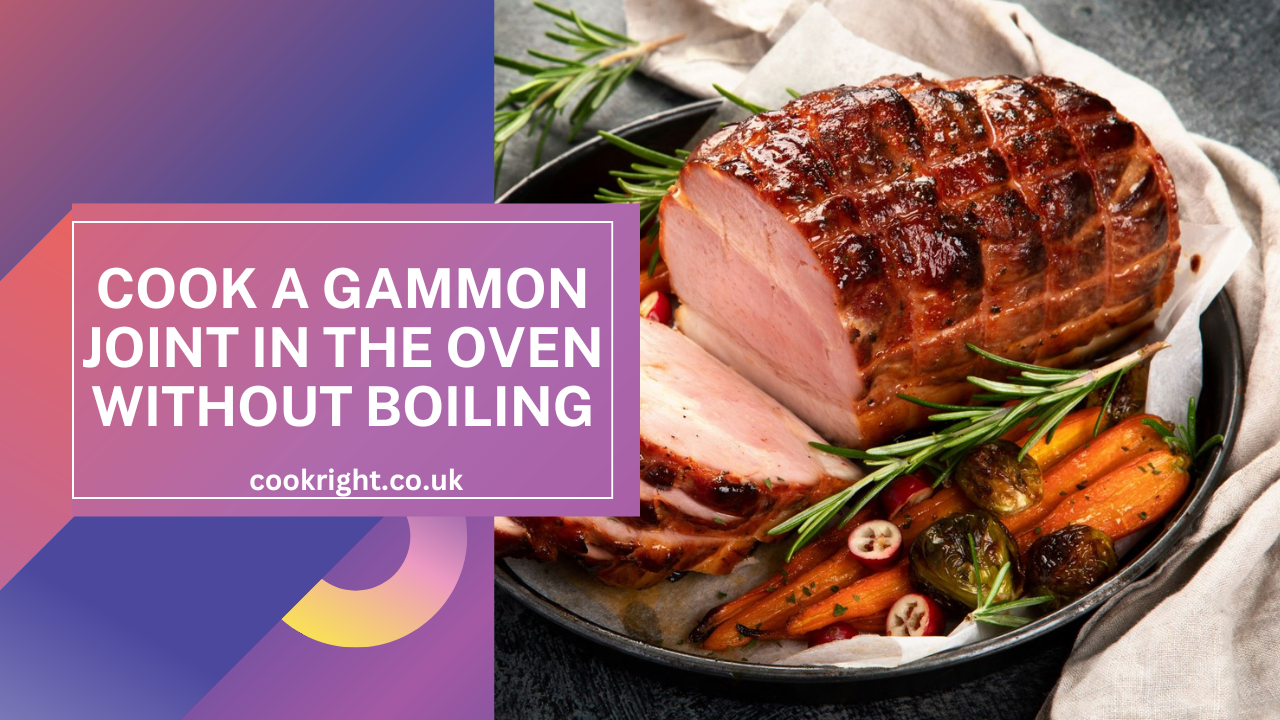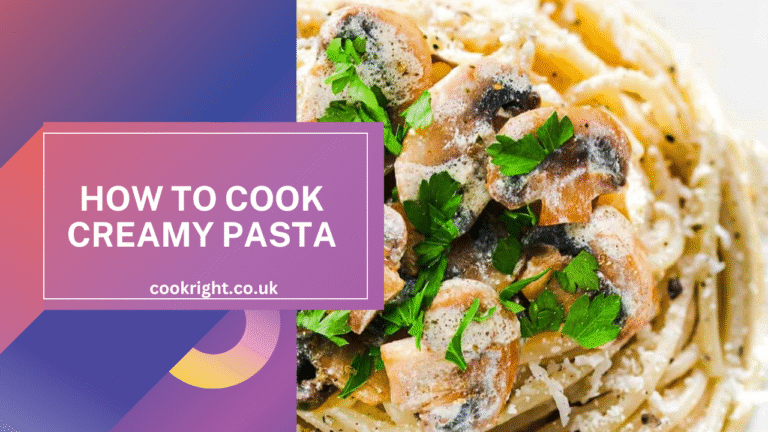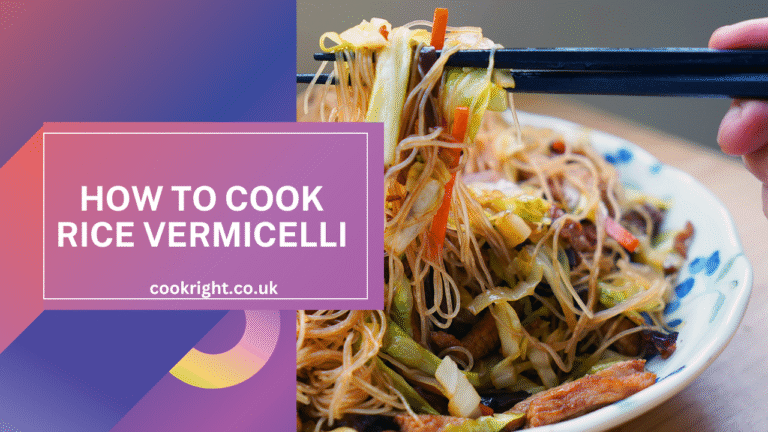When it comes to preparing a gammon joint, many traditional recipes start by boiling the meat. However, you can achieve an equally delicious—if not superior—result by cooking the gammon joint entirely in the oven. Oven-roasting enhances the flavour, retains the meat’s natural juices, and creates a beautifully glazed exterior that’s perfect for carving. In this post, we’ll walk through how to cook a gammon joint in the oven without boiling, and provide expert tips to ensure your roast is moist, tender, and packed with flavour.
Why Choose Oven-Roasting Over Boiling?
Cooking gammon in the oven without boiling is a popular choice for several reasons:
- Enhanced flavour: Roasting concentrates the flavour of the meat, unlike boiling, which can dilute it.
- Better texture: The oven allows the fat to render gently and crisp up the outer layer.
- Presentation: An oven-roasted gammon joint looks more appealing, especially with a golden glaze.
If you’re looking to impress guests at a holiday meal, Sunday dinner, or any special occasion, oven-roasted gammon is the way to go.
What Is Gammon, and How Is It Different from Ham?
Before we dive into the cooking process, it’s worth clearing up a common confusion. Gammon is a cut from the hind leg of pork that has been cured like bacon. Once cooked, gammon becomes ham. So, by roasting gammon in your oven, you’re essentially making homemade ham from scratch.
How to Cook a Gammon Joint in the Oven Without Boiling
Ingredients:
- 1 boneless or bone-in gammon joint (1.5kg to 2.5kg)
- 2 tablespoons of mustard (Dijon or English)
- 3 tablespoons of honey or brown sugar
- Whole cloves (optional)
- 1 tablespoon of apple cider vinegar or orange juice (optional for glaze)
- Ground black pepper
- Foil
Equipment:
- Roasting tin
- Sharp knife
- Basting brush
- Meat thermometer (optional but recommended)
Step-by-Step Guide:
1. Preheat Your Oven
Set your oven to 180°C (160°C fan) or 350°F. This moderate temperature allows the gammon to cook through gently without drying out.
2. Prepare the Gammon Joint
If the gammon joint comes wrapped in plastic or netting, remove it. Pat the meat dry with kitchen paper. If the skin is still on, you can remove it now or after the first roasting stage (some prefer to do it after for easier handling).
Using a sharp knife, score the fat in a crisscross pattern. This not only looks attractive but helps the glaze penetrate and creates deliciously crispy edges.
3. Wrap in Foil and Roast
Place the gammon joint in a roasting tin and wrap it loosely in foil, creating a tent-like shape. This helps retain moisture while allowing some air circulation.
Roasting time calculation:
Roast for 30 minutes per 500g plus an additional 30 minutes at the end. For example, a 2kg gammon joint will need 2.5 hours in the oven.
Place it in the centre of the oven and let it roast undisturbed.
4. Remove Foil and Apply Glaze
With about 30 minutes of cooking time remaining, take the joint out and remove the foil. If you haven’t already removed the skin, now is the time. Carefully peel it off, leaving the fat layer intact.
Mix your glaze: combine mustard, honey (or sugar), a splash of vinegar or juice, and pepper. You can stud the fat with whole cloves for added aroma and a classic look.
Brush the glaze generously over the fat and return the gammon to the oven uncovered.
Baste the joint with the glaze every 10 minutes to create a sticky, golden crust.
5. Check Internal Temperature
To be certain your gammon is cooked through, insert a meat thermometer into the thickest part. It should read 70°C to 75°C (160°F to 165°F).
If you don’t have a thermometer, insert a skewer—clear juices should run out.
6. Rest Before Carving
Once done, remove the gammon from the oven and cover it loosely with foil. Let it rest for 15–20 minutes. This allows the juices to redistribute, making it easier to slice and ensuring it stays moist.
Serving Suggestions
Oven-cooked gammon pairs beautifully with a wide range of side dishes. For a traditional Sunday roast, serve it with:
- Roast potatoes
- Seasonal vegetables (like carrots, parsnips, or Brussels sprouts)
- Cauliflower cheese
- Gravy or mustard sauce
Alternatively, you can slice it thin for sandwiches, dice it into soups, or serve it cold with salad.
Tips for the Best Oven-Roasted Gammon
- Choose the right joint: A boneless gammon joint is easier to carve, but a bone-in joint often has deeper flavour.
- Don’t skip resting: Even if you’re in a hurry, allow the meat to rest—it makes all the difference.
- Experiment with glazes: Try maple syrup, pineapple juice, cranberry, or even a spiced marmalade glaze for a unique twist.
- Cook once, enjoy twice: Leftover gammon can be used in pasta dishes, omelettes, and pies.
Frequently Asked Questions
Can I cook a gammon joint from frozen in the oven?
It’s not recommended. Always thaw the gammon joint thoroughly in the fridge before roasting to ensure even cooking.
Do I need to soak gammon before cooking?
If the gammon is unsmoked or labeled as low-salt, soaking is unnecessary. If you’re unsure, soak it in cold water for a few hours or overnight and discard the water.
What if I don’t have mustard?
You can skip mustard and glaze with just honey or brown sugar and a touch of fruit juice for caramelisation.
Final Thoughts
Cooking a gammon joint in the oven without boiling is a simple yet rewarding method that delivers incredible flavour and texture. Whether it’s for a holiday feast or a comforting midweek roast, this no-boil oven-roasted gammon recipe is one to keep in your repertoire. With just a little prep and a lot of patience, you’ll enjoy a succulent, golden-crusted gammon that’s sure to impress.
For best results, use a meat thermometer and let your roast rest—two small steps that make a world of difference.
Now that you know how to cook a gammon joint in the oven without boiling, it’s time to fire up the oven and get roasting. Happy cooking!




